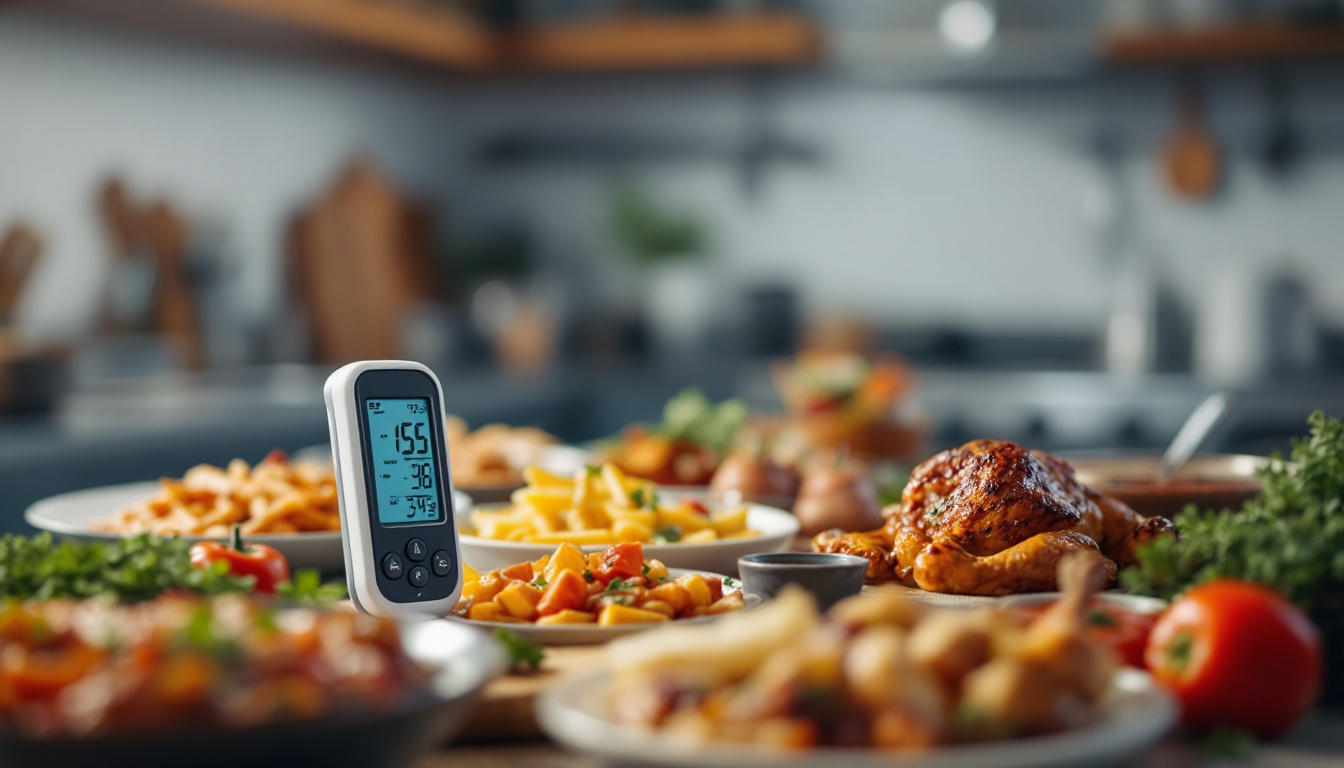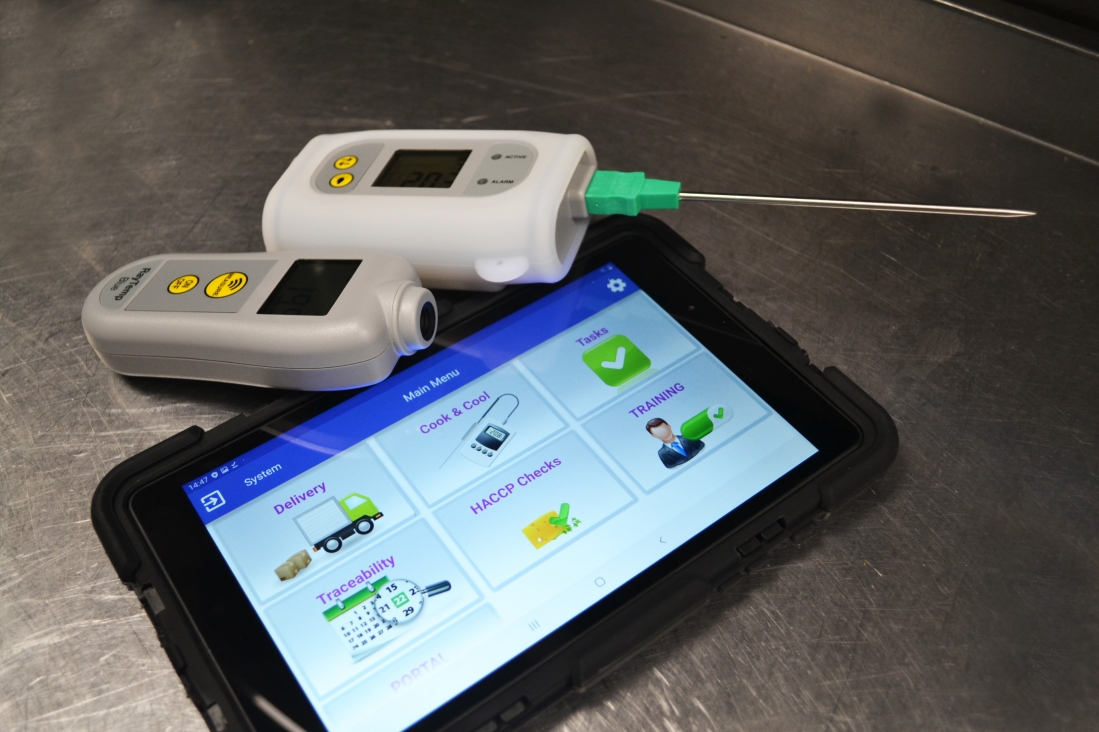In an increasingly globalised world, food safety has become a paramount concern for consumers, businesses, and regulatory bodies alike. One of the critical components in ensuring food safety is the effective monitoring of temperature throughout the supply chain. Temperature monitoring systems play an integral role in safeguarding food quality and preventing foodborne illnesses. This article explores the significance of these systems, the technology behind them, and their impact on food safety standards.
Understanding Temperature Monitoring Systems
Temperature monitoring systems are designed to track and record the temperature of food products at various stages, from production to consumption. These systems can be either manual or automated, with the latter being increasingly popular due to advancements in technology.
In a world where food safety is under constant scrutiny, the role of temperature monitoring systems cannot be overstated. They are not merely a regulatory requirement; they are a vital part of ensuring that every meal served is safe, nutritious, and of the highest quality.
Types of Temperature Monitoring Systems
There are several types of temperature monitoring systems, each with its own advantages and applications. The most common include:
- Data Loggers: These devices record temperature data at set intervals, providing a comprehensive overview of temperature fluctuations over time.
- Wireless Monitoring Systems: Utilising IoT technology, these systems enable real-time monitoring and alerts via mobile devices, ensuring immediate action can be taken if temperatures deviate from safe ranges.
- Infrared Thermometers: These non-contact devices allow for quick temperature checks of food surfaces, making them ideal for use in busy kitchens or food processing areas.
Each type of system serves a unique purpose, and the choice of which to implement often depends on the specific needs of a business and the nature of the food products being handled. For instance, a large-scale food manufacturer may benefit from an integrated wireless monitoring system that can oversee multiple locations simultaneously, while a small café might find handheld infrared thermometers sufficient for their daily operations. The flexibility in choosing the right system is essential for optimising food safety practices and ensuring compliance with industry standards.

The Importance of Accurate Temperature Control
Maintaining the correct temperature is crucial for food safety. Pathogenic bacteria thrive in certain temperature ranges, often referred to as the “danger zone,” which is typically between 5°C and 60°C. Within this zone, bacteria can multiply rapidly, leading to foodborne illnesses that can have severe health implications.
Temperature monitoring systems help ensure that food is stored, transported, and prepared at safe temperatures, significantly reducing the risk of contamination. Regular monitoring allows businesses to identify potential issues before they escalate, ensuring compliance with health regulations and maintaining consumer trust. Furthermore, the implementation of robust temperature monitoring practices can also enhance the overall quality of food products. By maintaining optimal temperatures, businesses can preserve the freshness, taste, and nutritional value of their offerings, ultimately leading to increased customer satisfaction and loyalty. This commitment to quality not only safeguards public health but also reinforces a brand’s reputation in a competitive marketplace.
Learn more on: Improve Accuracy with Food Temperature Monitoring Devices
Benefits of Implementing Temperature Monitoring Systems
The implementation of temperature monitoring systems offers numerous benefits for food businesses, ranging from improved safety to enhanced operational efficiency.
Enhanced Food Safety
By continuously monitoring temperatures, businesses can ensure that food products are kept within safe limits. This proactive approach helps to prevent spoilage and reduces the risk of foodborne illnesses, ultimately protecting consumers and enhancing brand reputation. Read more about spoilage at https://www.open.edu/openlearncreate/mod/oucontent/view.php?id=194&printable=1
Moreover, in the event of a temperature breach, automated systems can send immediate alerts, allowing for swift corrective actions. This capability is particularly vital in industries such as catering, where food safety is paramount. The ability to respond quickly can mean the difference between a safe meal and a potential health hazard, making these systems indispensable for any food service operation.
Additionally, many modern temperature monitoring systems come equipped with advanced analytics that can identify patterns over time. This data can be invaluable for training staff and refining processes, ensuring that best practices are not only established but also adhered to consistently. By fostering a culture of safety, businesses can further enhance their reputation and customer loyalty.
Compliance with Regulations
Food safety regulations are stringent, and compliance is non-negotiable for businesses operating in the food industry. Temperature monitoring systems provide documented evidence of compliance, which can be invaluable during inspections and audits.
By keeping detailed records of temperature data, businesses can demonstrate their commitment to food safety, which is essential for maintaining licenses and certifications. This transparency not only builds trust with regulatory bodies but also fosters consumer confidence. In an era where consumers are increasingly concerned about the origins and handling of their food, having robust compliance measures in place can serve as a significant competitive advantage.
Furthermore, many regulatory frameworks require businesses to maintain logs of temperature readings for extended periods. Automated systems simplify this process, allowing for easy retrieval of historical data during audits. This not only saves time but also reduces the administrative burden on staff, enabling them to focus on more critical aspects of food preparation and service.
Cost Efficiency and Waste Reduction
Implementing temperature monitoring systems can lead to significant cost savings. By ensuring that food is stored at the correct temperatures, businesses can reduce spoilage and waste. This efficiency not only saves money but also contributes to a more sustainable operation.
Furthermore, by identifying temperature fluctuations early, businesses can take corrective actions to salvage products that might otherwise be discarded, minimising financial losses and environmental impact. The financial implications of food waste are staggering, and by investing in technology that helps mitigate this issue, businesses can not only improve their bottom line but also contribute positively to the environment.
In addition to direct savings, the operational efficiencies gained through temperature monitoring can lead to better inventory management. With accurate data on product conditions, businesses can optimise their stock levels, ensuring that they are not over-ordering or under-utilising ingredients. This strategic approach to inventory can further enhance profitability while ensuring that customers receive the freshest possible products. To know more about accurate click here.
Technological Advancements in Temperature Monitoring
The landscape of temperature monitoring systems has evolved dramatically with the advent of new technologies. These advancements have made it easier than ever for businesses to maintain food safety standards.
Internet of Things (IoT) Integration
IoT technology has revolutionised temperature monitoring by enabling real-time data collection and analysis. Businesses can now monitor temperatures remotely, receiving alerts on their smartphones or computers if temperatures fall outside safe ranges.
This level of connectivity allows for more responsive management of food safety, as businesses can act quickly to rectify any issues, regardless of their location. Additionally, the data collected can be analysed to identify trends and improve operational processes.
Cloud-Based Solutions
Cloud technology has further enhanced the capabilities of temperature monitoring systems. By storing data in the cloud, businesses can access historical temperature records from anywhere, facilitating easier compliance reporting and audits.
Cloud-based solutions also allow for seamless integration with other systems, such as inventory management and supply chain logistics, creating a more cohesive approach to food safety and operational efficiency.
Challenges and Considerations
While temperature monitoring systems offer numerous benefits, there are challenges and considerations that businesses must address when implementing these technologies.
Initial Costs and Investment
The initial investment in temperature monitoring systems can be significant, particularly for small businesses. However, it is essential to view this as a long-term investment in food safety and operational efficiency.
Many businesses find that the cost savings from reduced waste and improved compliance far outweigh the initial expenditure. Additionally, various funding options and government grants may be available to assist with the implementation of food safety technologies.
Training and Adoption
For temperature monitoring systems to be effective, staff must be adequately trained in their use and the importance of temperature control. This training should encompass not only how to operate the systems but also the broader implications of food safety.
Creating a culture of food safety within the organisation is crucial for the successful adoption of temperature monitoring systems. Regular training sessions and updates can help ensure that all staff remain vigilant and informed.
Conclusion
Temperature monitoring systems are an essential component of food safety, providing businesses with the tools they need to protect consumers and comply with regulations. By investing in these systems, businesses can enhance food safety, improve operational efficiency, and reduce waste.

As technology continues to advance, the capabilities of temperature monitoring systems will only improve, offering even greater benefits to the food industry. Embracing these innovations is not just a matter of compliance; it is a commitment to quality, safety, and sustainability in food production and service.

